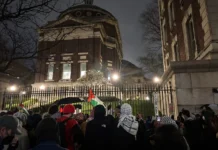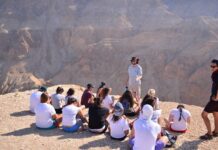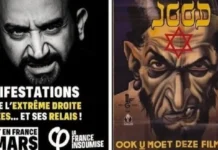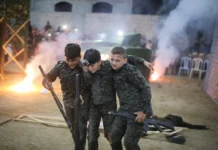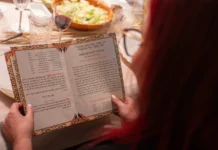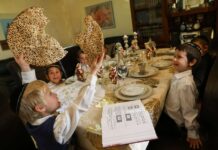A new arrangement of a powerful composition conveying the horrors of war, written by a Toronto musician while he was interned in a displaced persons’ camp in 1946, will premiere at the Jewish Music Week festival in Toronto.
The original performance of Leo Spellman’s Rhapsody 1939-1945 took place in 1947 at Furstenfeldbruck, a displaced persons’ camp in Germany, and was played by musicians who were interned at the camp.
Born into a musical Jewish family, Spellman was a popular pianist in his hometown of Ostrowiec, Poland. The life of his cousin, Wladyslaw Szpilman, was the subject of Roman Polanski’s 2002 film, The Pianist. Spellman survived the Holocaust thanks to a young Pole who loved his music and hid him and his wife, Mary, in a rented apartment for the last 18 months of the war.
The couple immigrated to Canada with their son, Les, in 1948, settling in Toronto, and Spellman founded a dance band that performed at weddings and parties for the next few decades.
In the late 1990s, Henry Baigelman, a violinist who performed the Rhapsody in Furstenfeldbruck, suggested the United States Holocaust Memorial Museum in Washington, D.C., contact Spellman to provide music for a conference called Life Reborn: Jewish Displaced Persons, 1945-51. The institution’s musicologist flew to Toronto and found the handwritten music for the Rhapsody in a suitcase in Spellman’s garage. The work was performed at the conference in January 2000.
In 2011, Paul Hoffert — a musician, composer and a former member of the Canadian rock band Lighthouse — created a new arrangement for the Rhapsody. He also added some melodies written by Spellman’s great-grandfather, who was a violinist. Hoffert’s arrangement was performed at the Ashkenaz Festival in Toronto by a 26-member orchestra in September 2012. It was a standing-room-only event that Spellman, at 99, witnessed. He died shortly after, in December 2012.
Last year, Gary Martin, a musician and composer, re-orchestrated the Rhapsody for a 40-piece concert band. Written in three sections, the Rhapsody opens with the clamour and chaos of war, the second part is sombre, evoking the depths of human suffering, and the final joyful section includes the melody from Hatikvah.
Martin orchestrated and arranged the first part of the Rhapsody with the intent of making the listener somewhat uncomfortable. “It’s not a comfortable, easy piece at the beginning. I’ve tried to put a lot of dissonance in it, to help drive home that this was not our finest hour,” he said.
Martin, who isn’t Jewish, immersed himself in the literature of the Holocaust while he was working on the new arrangement. The Rhapsody harnesses the emotional appeal of music to convey the horrors of war, he said. “I think the power of this music will speak to the inner being. I’m hoping people will stop and think about their racist attitudes, and I think this music will maybe give them a second thought.”
Both Martin and Hoffert will speak about the Rhapsody when the new arrangement, which is 25 minutes long, premieres at 3 p.m. on May 28 at St. Paul’s Basilica (83 Power St.) in Toronto, as part of Jewish Music Week. Admission is free.
Aliza Spiro, the festival’s artistic director, said the concert is being presented in a church because the Rhapsody is an important piece of music that should be heard by the greater community. Spiro said she’s hoping that anyone who may be hesitant about attending a concert in a church will be able to put those feelings aside and come out to hear the Rhapsody, which she called an “important piece of music that crosses all racial and religious boundaries.”
The concert is going to be filmed and Martin will upload the video onto YouTube to promote the Rhapsody to other bands. The conductor of the award-winning Japanese Gyosei high school band has already expressed interest in programming the piece.

